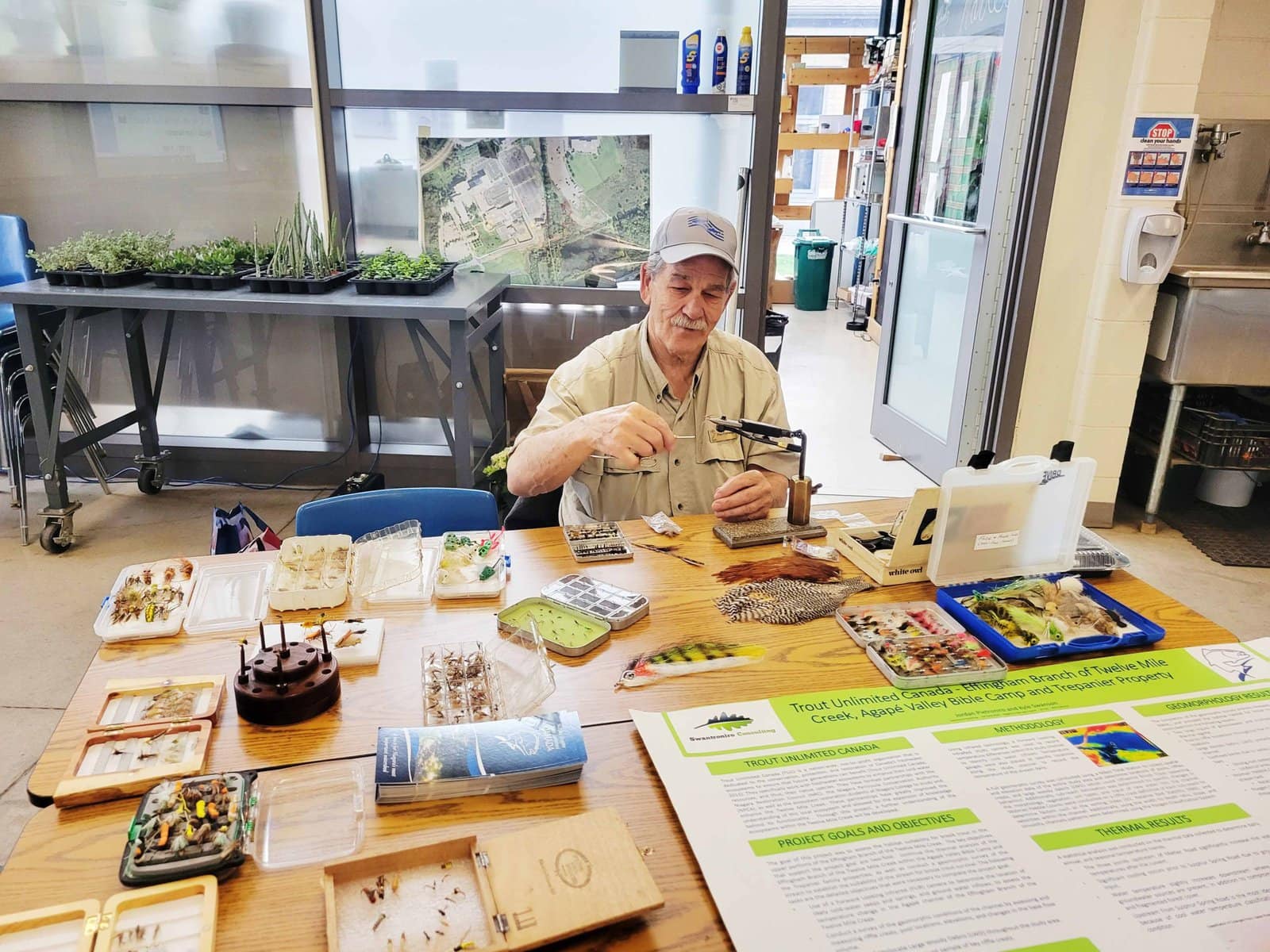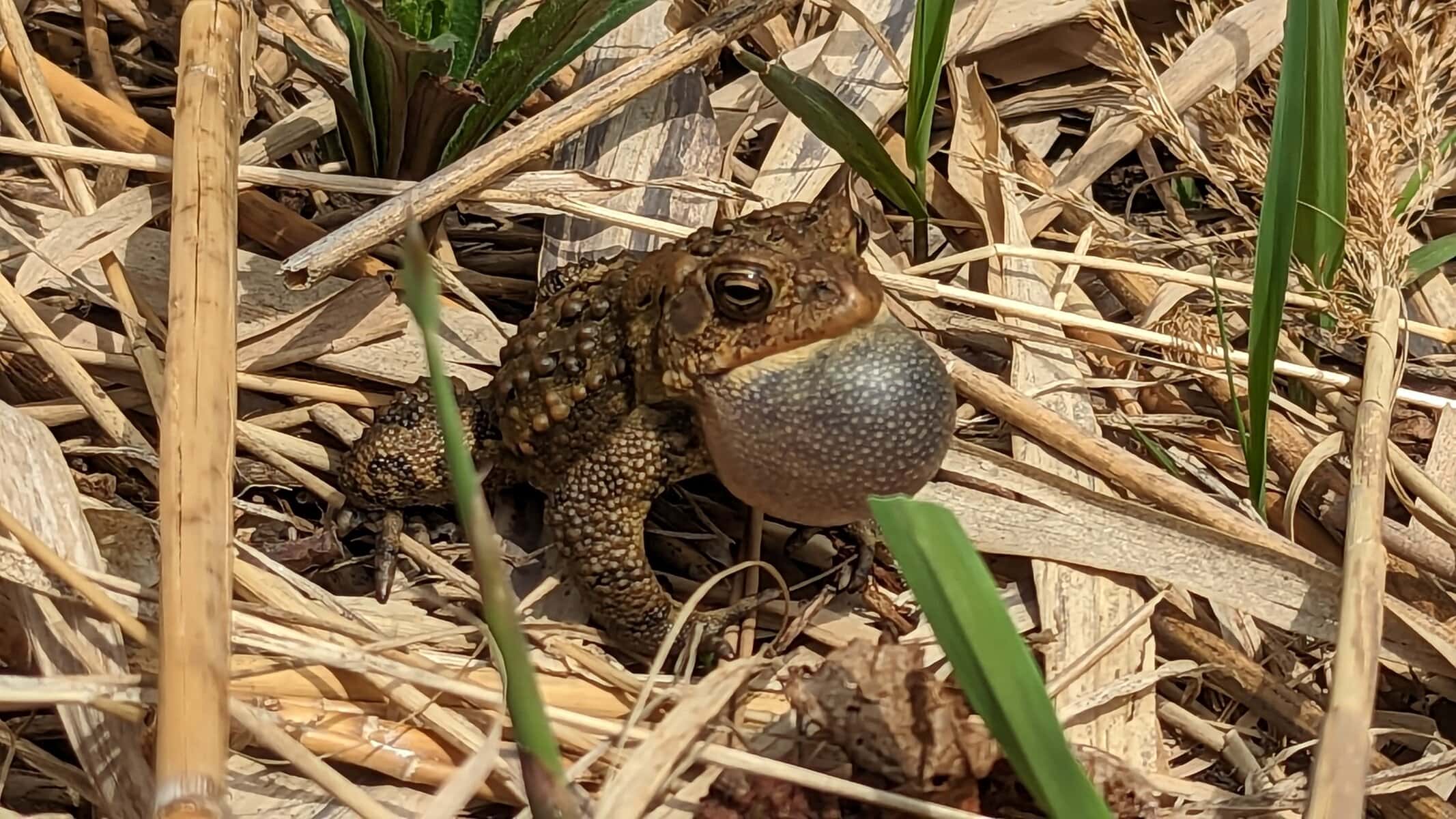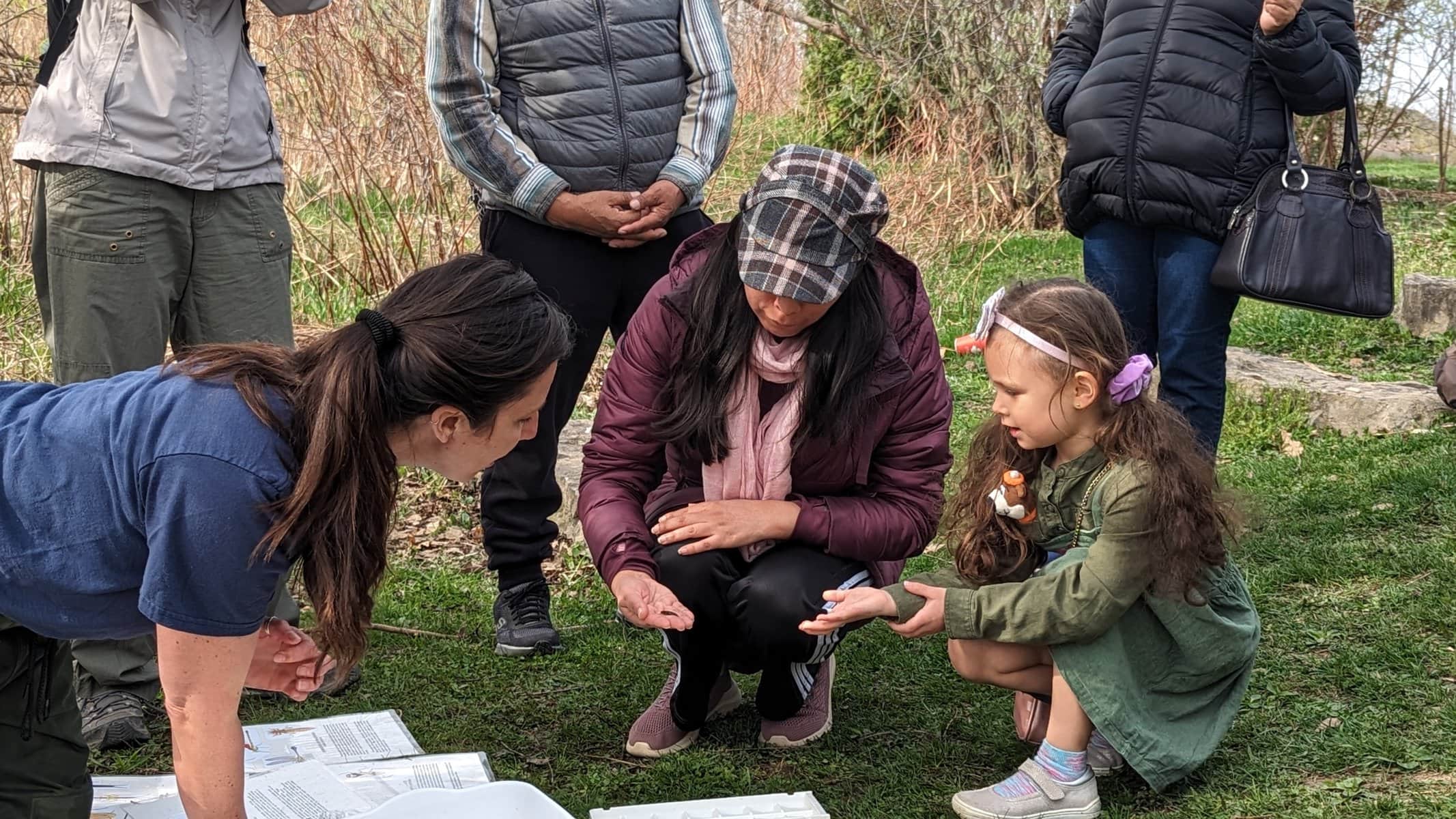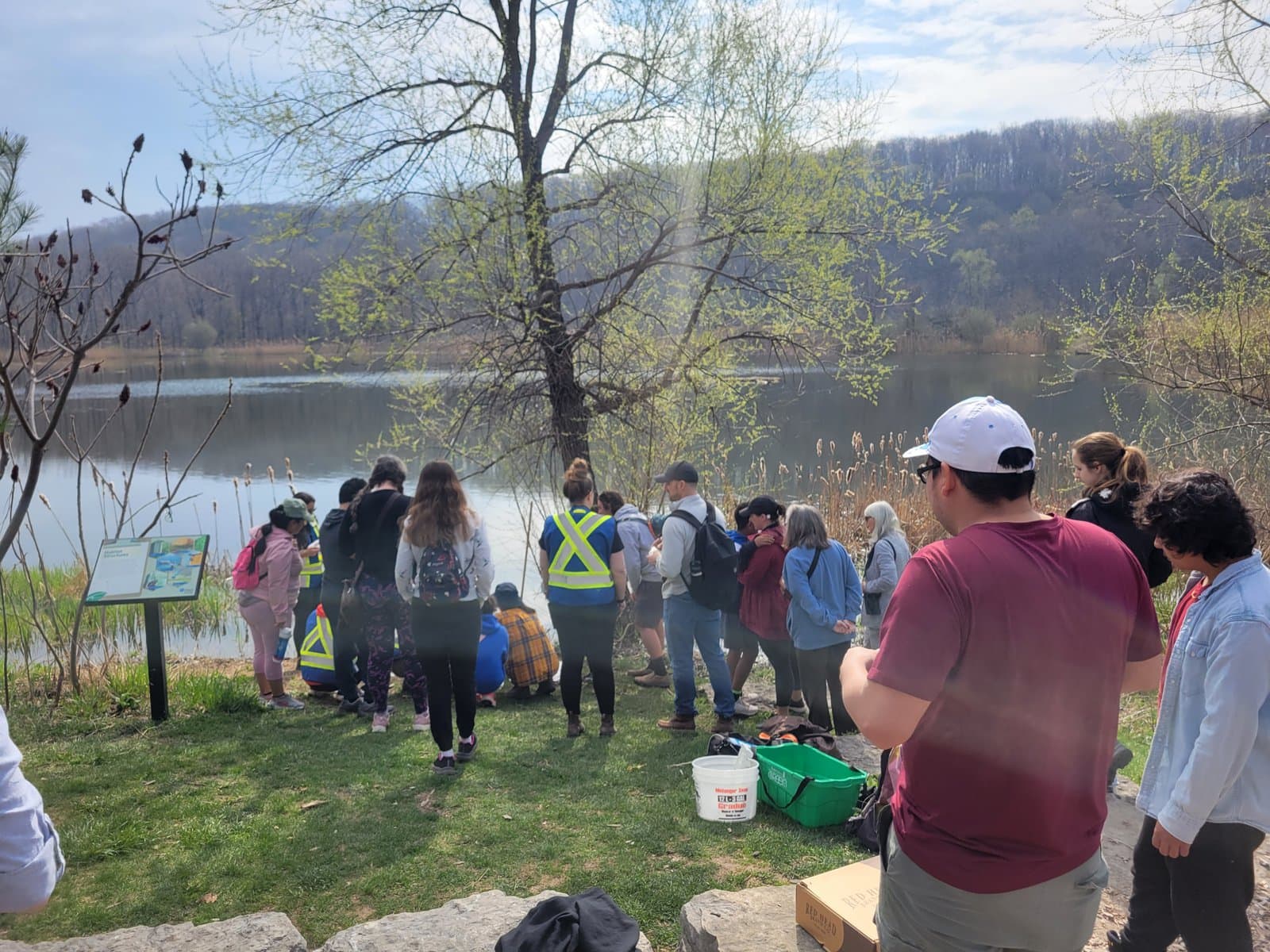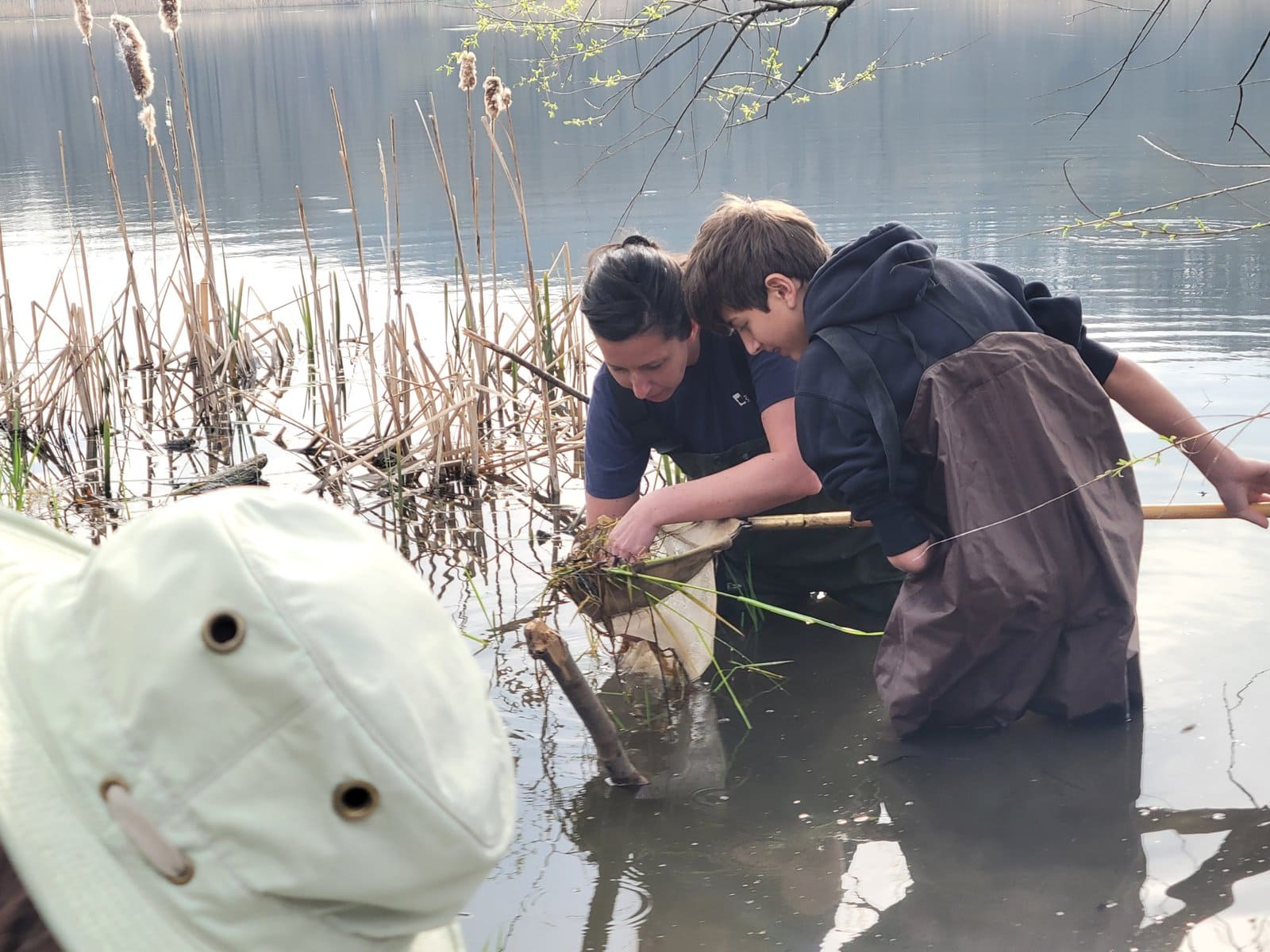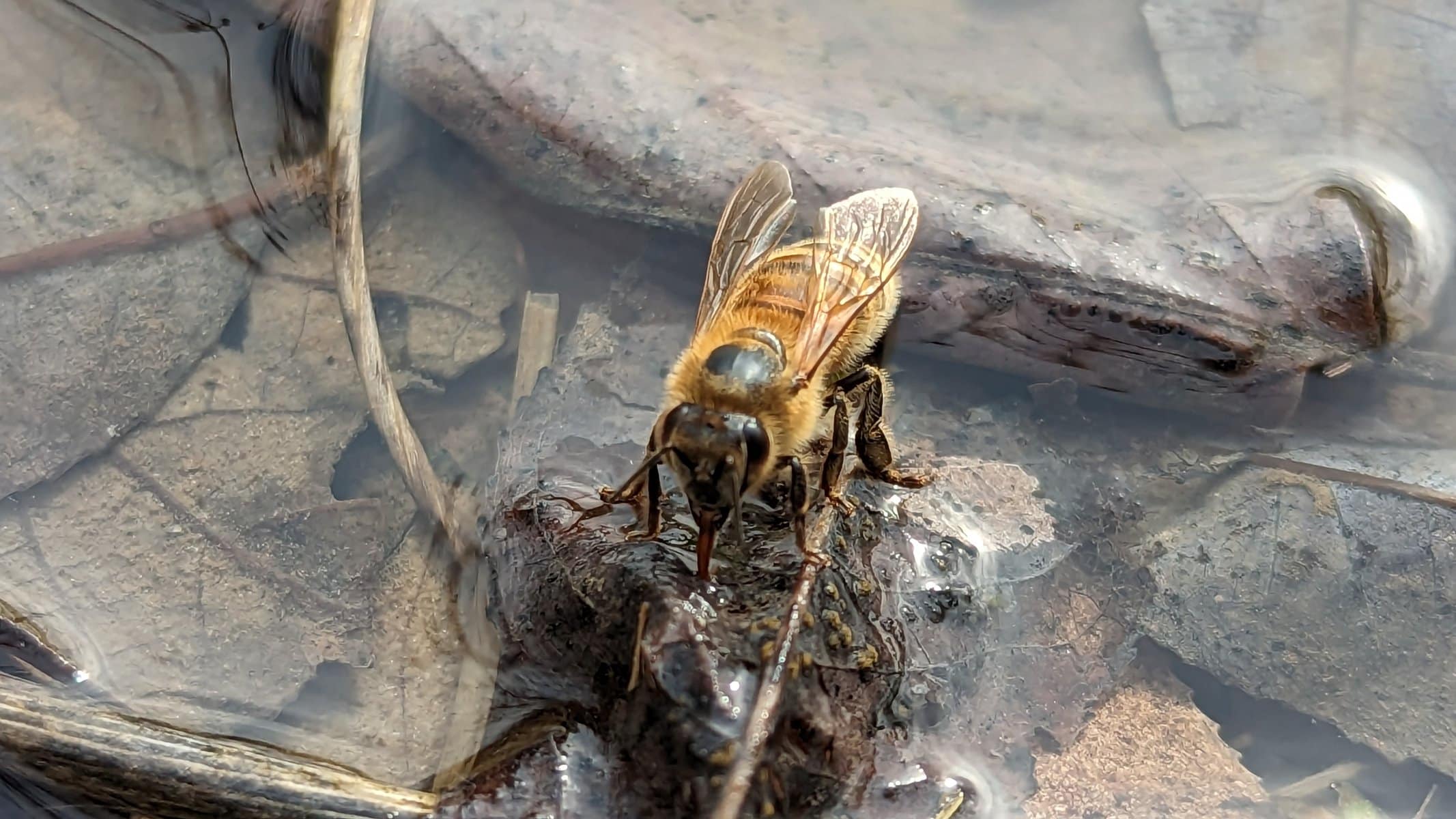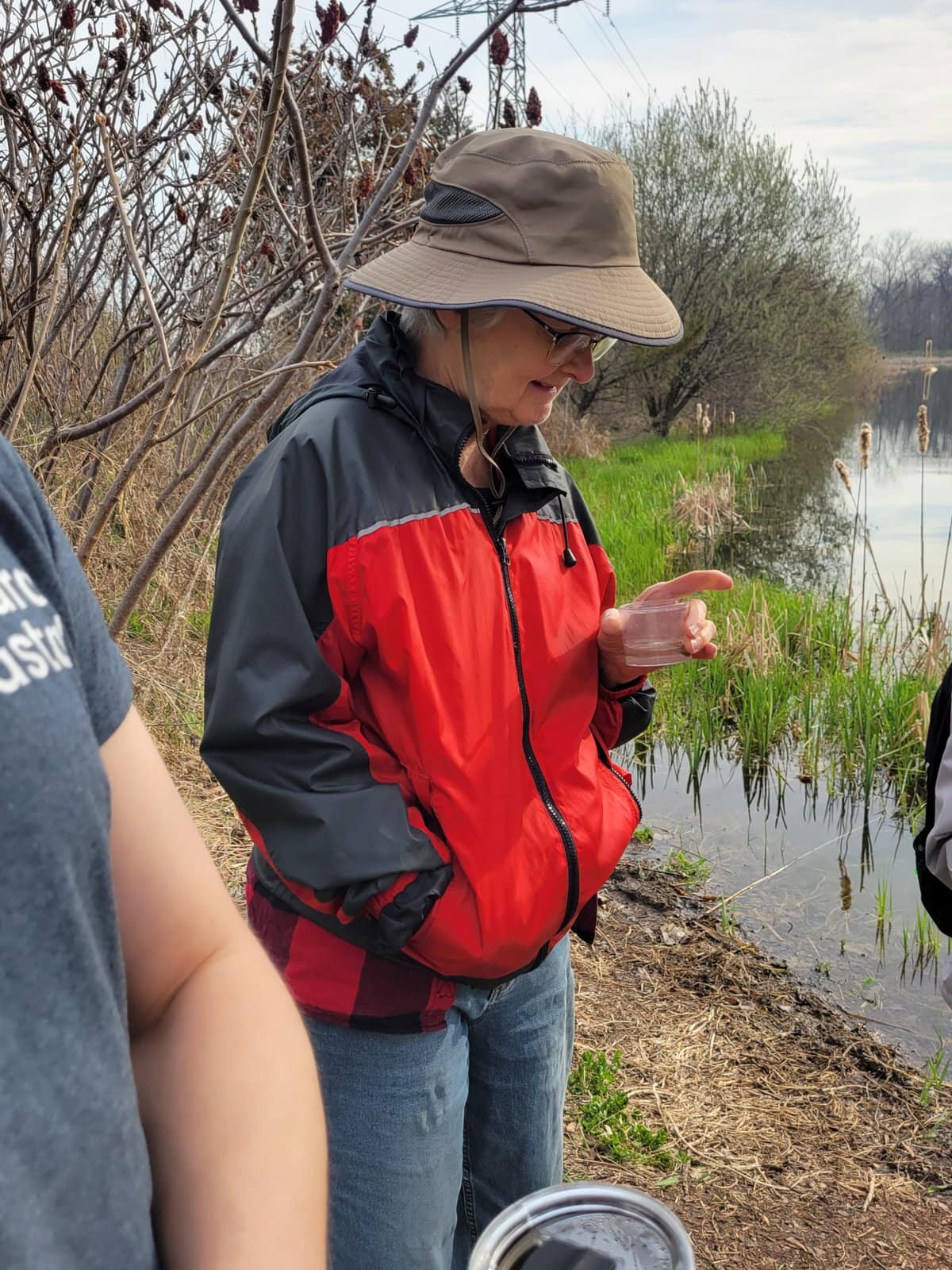Niagara College’s eighth annual spring BioBlitz was a flourishing success.
On Saturday, April 15, about 120 people explored the Niagara-on-the-Lake campus to learn about native species.
Sessions throughout the day featured talks and demonstrations by experts from the community.
Katie Bristow, Niagara College’s sustainability program and outreach co-ordinator, led an early bird ID hike at 6 a.m.
Bob Highcock and Jean Hampson of the Peninsula Field Naturalists also guided a group, equipped with binoculars and long camera lenses, on a bird identification hike later in the day.
Marcie Jacklin, a nationally awarded bird expert and activist, was thrilled to see a palm warbler. “My first warbler of the year!”
“Thirty-three years (of birding) and … it never gets old,” said Jacklin.
Trumpeter swans were also spotted in the wetlands. The swans have black beaks, unlike the invasive mute swan common in Ontario, which has an orange bill.
Kerry Royer, co-ordinator of volunteer and community outreach for the Niagara Peninsula Conservation Authority, donned chest-waders and splashed into the college’s wetland area to scoop up benthic invertebrates.
The diversity of these insects, which live in sediment at the bottom of a water body, is a useful way to determine water quality.
Volunteers used an ice cube tray to separate insects and count different types in the wetlands. “There’s a lot of diversity here, which is awesome,” said Royer.
Participants of all ages were fascinated by the creepy crawlies. “He’s upside down,” exclaimed one little girl and promptly helped a water beetle to right itself.
After their aquatic life stage, many of these benthic insects will grow up to be dragonflies, midges and other flying insects.
Throughout the various walks and demonstrations, several people instinctively stooped to pick up litter.
“It’s a living campus, which is the most exciting part,” said Gregary Ford, executive director of Niagara Coastal.
One of the invited experts, Ford is also an alumnus of the Niagara College ecosystem restoration program.
“Here, people are living harmoniously with nature: from the wetlands to the UNESCO Biosphere of the escarpment, right next to vineyards and the horticulture programs at the college. It all strikes a balance,” said Ford.
The Niagara chapter of Trout Unlimited Canada brought along educational materials.
The organization comprises a variety of stakeholders, including anglers, motivated to protect aquatic ecosystems for recreation and environmental conservation.
“Twelve Mile Creek is one of the last cold-water streams,” Gary Kosinsky explained, and it’s one of the only remaining ecosystems in Niagara supporting healthy brook trout populations, which are an indicator of water quality.
Representatives from Trout Unlimited also demonstrated how to tie and cast flies for fishing. “Some take five minutes (to tie), some take more than four hours!” said Kosinsky.
Other sessions at the BioBlitz included a campfire with the Indigenous education department, an insect identification hike with entomologist Margaret Pickles, a family-friendly hike led by Owen Bjorgan, and a community cleanup with Home Depot St. Catharines.
The college was delighted by the event’s success, said Bristow. “We’ve had a very good turnout. We were hoping for about 50 people.”
“We had one attendee ask if we could do the BioBlitz every weekend,” Bristow said with a laugh. “The weather has helped. It’s really gotten people excited to go back outside again.”
The BioBlitz, which has not run in-person since 2019, is an important occasion for the college.
“We have certifications on this campus that require us to have a biodiversity inventory, through the Audubon International Cooperative Sanctuary,” said Bristow.
“Having a running inventory of what’s here really helps with student projects,” she said, especially for the ecosystem restoration and environmental field and lab technician programs.
Niagara College is hoping to host a BioBlitz this fall and has also been contacted by the Canadian Wildlife Federation to collaborate on another event.
As for the results? Bristow said they are developing a way for everyone to view the species counts. “We’re working with the business analytic postgraduate program … creating something for biodiversity.”



